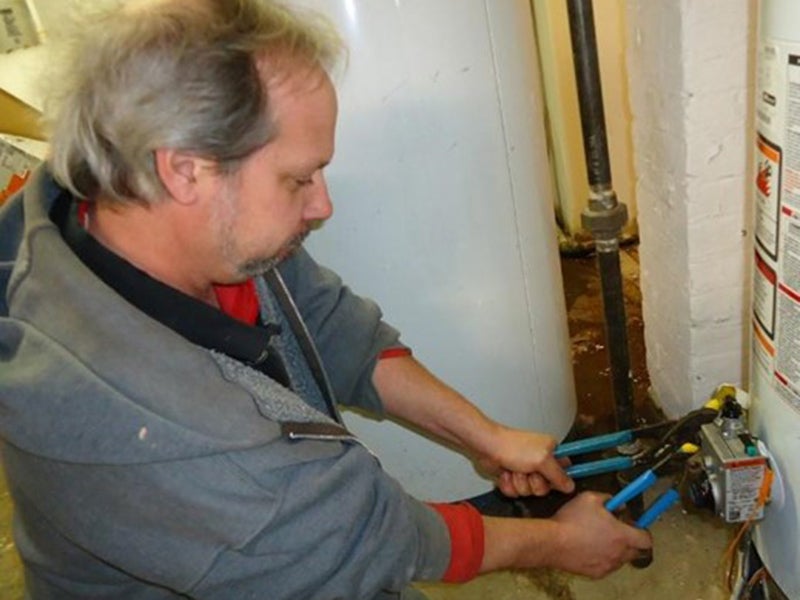Plumbing Dos and Don’Ts Everyone Should Know


Plumbing is the most important part of any home. It’s what keeps your water running through the pipes and keeps you safe from any leaks. But plumbing can be tricky, especially if you don’t know what you’re doing. Here are some dos and don’ts to make sure that your home plumbing is working properly.
Do make sure that everyone who lives at home knows how to change out faucets or fix minor issues if they arise! This will save everyone money on a plumber in case there’s ever an emergency situation or something goes wrong unexpectedly!
Don’t forget about replacement parts! If there is an issue with one part of your plumbing system, chances are good that there are other parts in need of replacement as well! Make sure that all of those replacements happen at once, so no other issues pop up down the road!
Stay with us as we look at additional dos and don’ts surrounding your plumbing system:
Don’t Pour Oil Down the Drain
Never pour oil down the drain, as it can clog the pipes and damage your septic system. If you do need to dispose of oil, you can use a pump-out service or take it to a local recycling center. But if you do go with the latter option, be sure to use a sturdy container (you don’t want any accidents) so that no one gets hurt in case of an explosion!
In addition, if you do encounter an oily mess on your hands after working with plumbing fixtures in your home: stay calm! Here are some tips for cleaning up oily spills from plumbing fixtures:
Don’t Flush Unnecessary Items
If you’ve ever used a public bathroom, you know that paper towels and feminine hygiene products are an unfortunate fixture of the experience. You see it in the stall next to yours, over and over again: someone flushing a square of toilet paper or a tampon down the toilet.
But why? Why do people feel so compelled to do this? Because they don’t know any better? Because their parents taught them that this is what you do when you’re in a pinch? Or because they’re just too lazy to toss them out in the trashcan (which sounds more likely)?
Regardless of the reason why this behavior is common among folks who have just used the loo—it’s not good for your pipes or your planet (or our oceans). That’s because these products break down very slowly, if at all. They’ll clog up your plumbing system and cause an overflow; then, all sorts of bacteria will grow in that mess.
Change Water Heater’s Anode Rod Every Once in a While
The anode rod is a sacrificial metal that protects the tank from corrosion. It should be replaced at least once every three to five years, but it can be done by a professional or DIY. The cost of replacing your anode rod varies depending on where you live and what kind of tank you have (gas or electric).
One of the most important things that you can do for your water heater is to clean it regularly. It may seem like a chore, but cleaning your water heater will extend its life and keep it from leaking. You should also check for leaks in your pipes because they can cause damage inside your home if left unchecked.
Check for Leaks Around Water Appliances
Check for leaks around your tubs and showers.
- Turn off the water supply.
- Find a drain plug or stopper inside the tub or shower, if there is one. If you don’t have one, use a sponge to soak up as much standing water as possible before removing any fixtures (such as faucet handles) that could fall into the bathtub when you remove the trap.
- Remove any screws holding the drain assembly in place using an adjustable wrench or pliers with wire cutters on them. The drain assembly will include either a rubber gasket or cork washer between it and the bottom of your drain pipe; make sure not to lose this gasket when removing it!
Don’t Just Rely on Plunger for Clogs
Plungers are a common tool in the DIYer’s arsenal, but they should be used with extreme caution. First, you can’t guarantee that it will get your drain unstuck. The plunger is only a temporary fix, and if you use it incorrectly (i.e., not in accord with manufacturer recommendations), you’ll likely cause more damage than good. You can call an expert to take care of the problem for you instead of trying to do it yourself.
If you’ve tried plunging and the clog remains, call a plumber. There are several reasons why this is important:
- Plunging can cause cracks in your pipes that lead to leaks, which isn’t just an eyesore; it’s also bad for the environment.
- If you believe that the clog is due to too much toilet paper, try using less of it next time. In fact, if you want to save even more money than buying a plunger does (let’s face it—plungers aren’t cheap), consider switching over from toilet paper altogether! You can use facial or cotton rounds instead, which can be washed between uses and will save you loads of money in the long run! You’ll also be helping out our planet since these products are biodegradable and don’t require packaging like toilet paper does.”
Whether you’re doing a new installation or fixing an old one, it pays to be careful with your plumbing. By following the tips in this article, you can ensure that your pipes don’t leak and cause damage to your home. It’s also important to call on a plumber if something goes wrong with your system because they have the tools and experience to fix it immediately!
RECENT POSTS
categories
Archives
2024
2023
2022
2021
2020
2019
- December (2)
- November (2)
- October (2)
- September (2)
- August (2)
- July (2)
- June (2)
- May (2)
- April (2)
- March (2)
- February (2)
- January (2)

